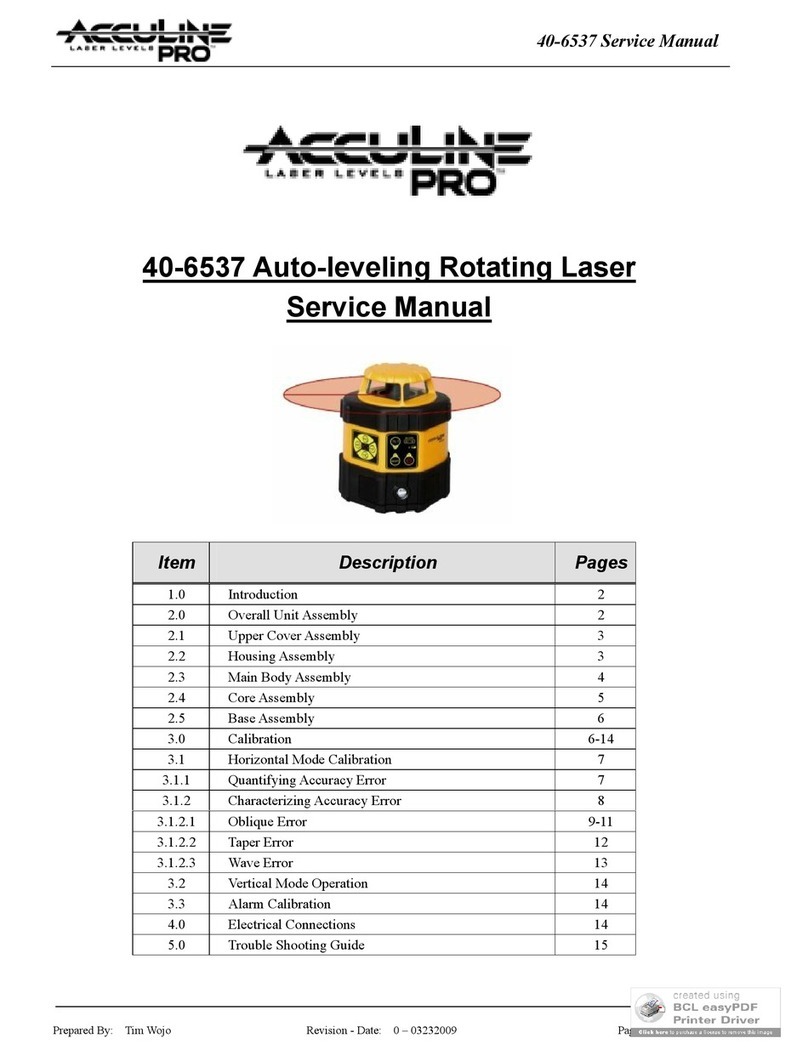
Prepared By: Tim Wojo Revision - Date: 0 – 20080430 Page 4 of 13
40-6540 Service Manual
2.1.1 Rotating Head/Prism Disassembly (AP1793/AP1795)
1. Using a Phillips screw driver, remove 2 screws (13-1) from 13-5 and gently lift off 13-2 and 13-3.
2. Using a Phillips screw driver, remove 4 screws/washers (13-9, 13-10) from 13-26 and gently lift off 13-11
2.1.2 Shaft Coupling Module Disassembly (AP1797)
3. Using a 1.5 mm Allen Wrench, loosen set screw
located on the top side of the gimbal assembly
pictured to the right.
4. Using a flat screw driver, remove 2 inner screws that
connect the gimbal assembly to the laser/motor
assembly (13-14). Reference the picture to the
right.
5. Due to the nature of the laser/motor assembly (13-14)
and the fact that the x, y, and z level indicators are
factor calibrated, no further disassembly instructions
are provided.
If any component of this assembly is suspect,
the entire assembly should be replaced.
2.1.3 X Direction Leveling Module Disassembly (AP1800)
6. Remove X direction leveling module (13-15) by removing the 3 cross head screws located on the bottom side of
13-16 Bottom Plate.
Due to the mechanical nature of this assembly, some of the components can become worn and may require
period lubrication and/or readjustment (i.e. gear, shaft, motor, etc.)
In the event that the unit is damaged due to being dropped, all bent or damaged components should be replaced
as this assembly is integral to the self leveling of the device.
2.1.4 Y Direction Leveling Module Disassembly (AP1806)
7. Remove Y direction leveling module (13-25) by removing the 3 cross head screws located on the bottom side of
13-16 Bottom Plate.
Due to the mechanical nature of this assembly, some of the components can become worn and may require
period lubrication and/or readjustment (i.e. gear, shaft, motor, etc.)
In the event that the unit is damaged due to being dropped, all bent or damaged components should be replaced
as this assembly is integral to the self leveling of the device.
2.1.5 Alarm Board Removal/Replacement (AP1805)
1. Using a Phillips screw driver, remove 2 screws/washers (13-23, 13-24) from 13-16 and gently remove circuit board
from assembly.
Gimbal Assembly





























